 Holstein Association USA recently recognized three distinguished individuals at the recent National Holstein Convention in Bloomington, Minn. To learn more about each individual, visit the Association’s website.
Holstein Association USA recently recognized three distinguished individuals at the recent National Holstein Convention in Bloomington, Minn. To learn more about each individual, visit the Association’s website.
Ida B. Ruby, Scio, Ore., was awarded Holstein Association USA’s 2010 Distinguished Leadership Award. This award recognizes an individual who has made a career of providing outstanding and unselfish leadership for the betterment of the dairy industry.
A third generation dairy farmer, Ida was born and raised on her parents’ Registered Holstein farm in West Linn, Ore. She married Ray Ruby in 1965, and the couple began breeding Registered Holsteins under the Fir-Ridge prefix, after purchasing several cows from her parents’ herd. They purchased Ray’s father’s farm in 1967, naming it Fir-Ridge Holstein Farm, and grew their business together over the next 40 years to its current size, milking over 1,000 Holsteins and farming 1,300 acres of land.
Tim Baker, of Star-Summit Holsteins in Byron Center, Mich. is the the 2009 Distinguished Young Holstein Breeder.
Tim has worked with Registered Holsteins his entire life, and their family has a rich history in the dairy industry. This fall will mark the centennial anniversary for their farm, which was purchased by Tim’s grandfather in October 1910. Baker’s father, Henry, took over the dairy in 1957, and purchased his first Registered Holstein in 1959.
Tim’s herd began in 1980, when his father gave him is first Registered calf for a 4-H project. That first calf went on to score VG-86 and produced over 230,000 pounds of milk, and many offspring can be found in Tim’s current herd. He says, “My criteria then and still today for purchasing cows includes good quality cow families, top production, high type and components.” Tim took over management of the farm himself in 1997. Today, he is milking 60 cows twice a day.
Doug Maddox, Riverdale, Calif., is the 2010 recipient of Holstein Association USA’s Elite Breeder Award. The award recognizes a Holstein breeder who has bred outstanding animals, making a notable contribution to the Holstein breed in the United States.
Maddox is known around the world as a good businessman, a mentor for younger dairy producers, and someone with a deep respect for the Holstein breed and dairymen worldwide. While his family did not operate a dairy farm, his Registered Holstein career began early. At the age of 14, a neighbor gave him a bull calf to show in FFA. Later, with the promise that if he accepted the gift he would attend college, he was given a heifer calf. Doug kept that promise, and by the time he graduated from California Polytechnic Institute, Maddox had grown his herd to 14 cows and 14 heifers.
RuAnn Dairy was established in 1957, when Maddox purchased the 500-acre ranch for $200 an acre. The RuAnn prefix is a combination of his parents’ names – Rufus and Annie. He has grown his enterprise over the past 53 years, and today, between RuAnn and Maddox Dairies, there are over 5,000 Registered Holstein cows, with over 12,000 total animals. Marketing Registered Holstein genetics has always played an important role in the Maddox business plan. Doug describes their philosophy as, “A commercial herd with breeder quality.” Today, they are averaging over 26,000 pounds of milk and 1,000 pounds of fat, with over 200 Excellent and over 1,500 Very Good cows in the herd.
Source: Holstein Association USA
 Cooperatives Working Together (CWT) accepted one bid from Dairy Farmers of America, Inc. for 50 metric tons (110,231 pounds) of Cheddar cheese to the Middle East. The product will be delivered in September 2010.
Cooperatives Working Together (CWT) accepted one bid from Dairy Farmers of America, Inc. for 50 metric tons (110,231 pounds) of Cheddar cheese to the Middle East. The product will be delivered in September 2010.
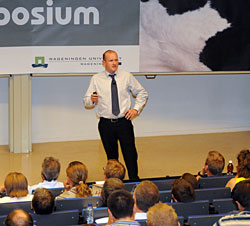 One of our presenters at the
One of our presenters at the 



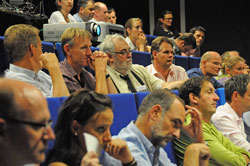 The
The 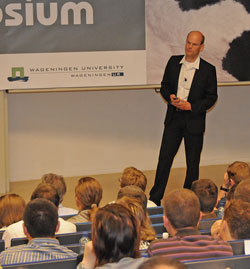 Dr. Andre Bannink,
Dr. Andre Bannink, 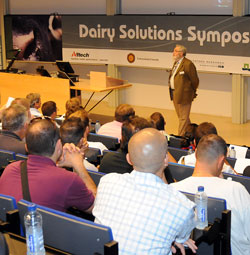 The final day of the Dairy Solutions Symposium, sponsored by Alltech, was started by Dr. Ad van Vuuren,
The final day of the Dairy Solutions Symposium, sponsored by Alltech, was started by Dr. Ad van Vuuren, 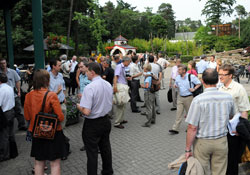 The
The